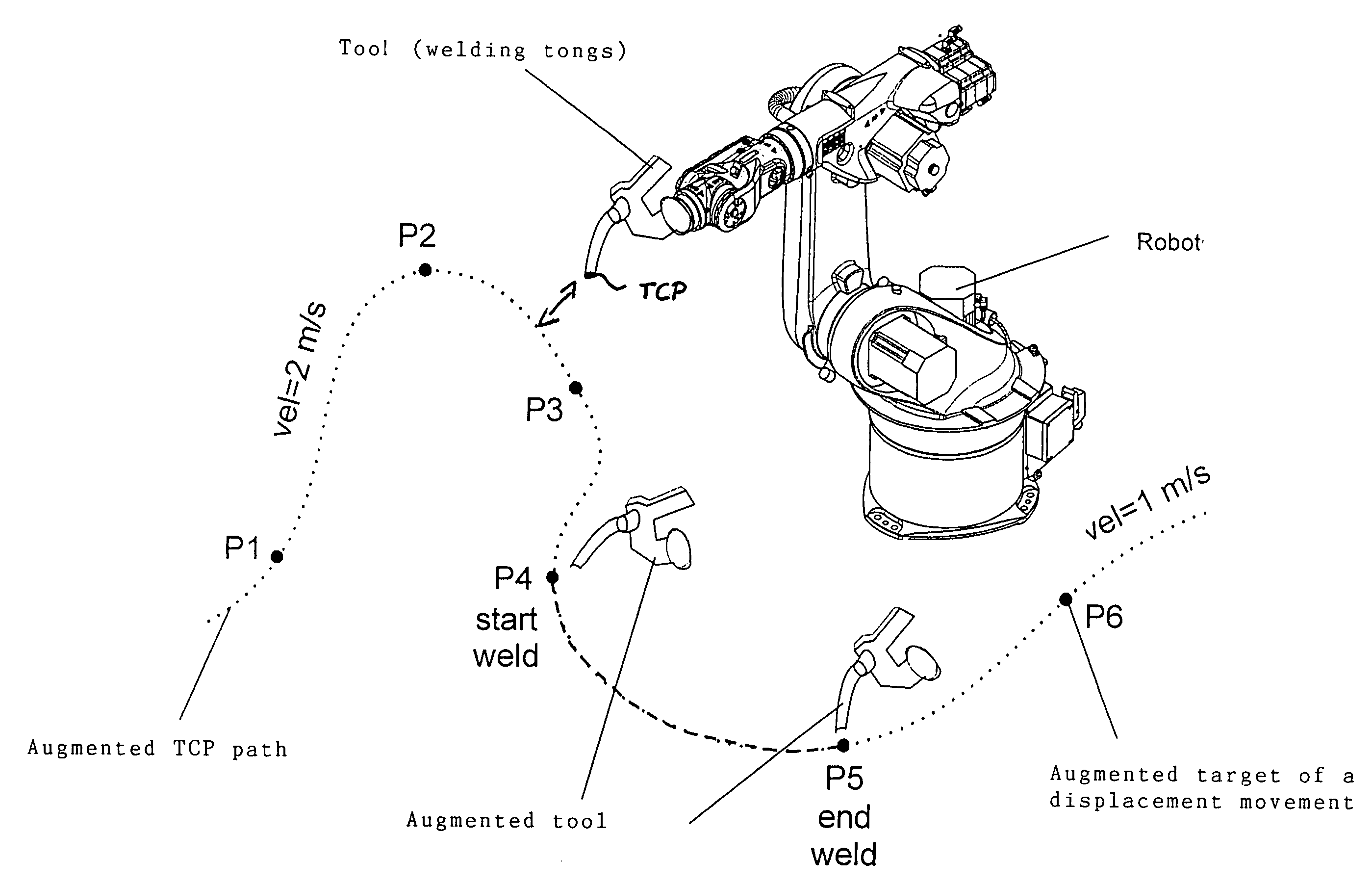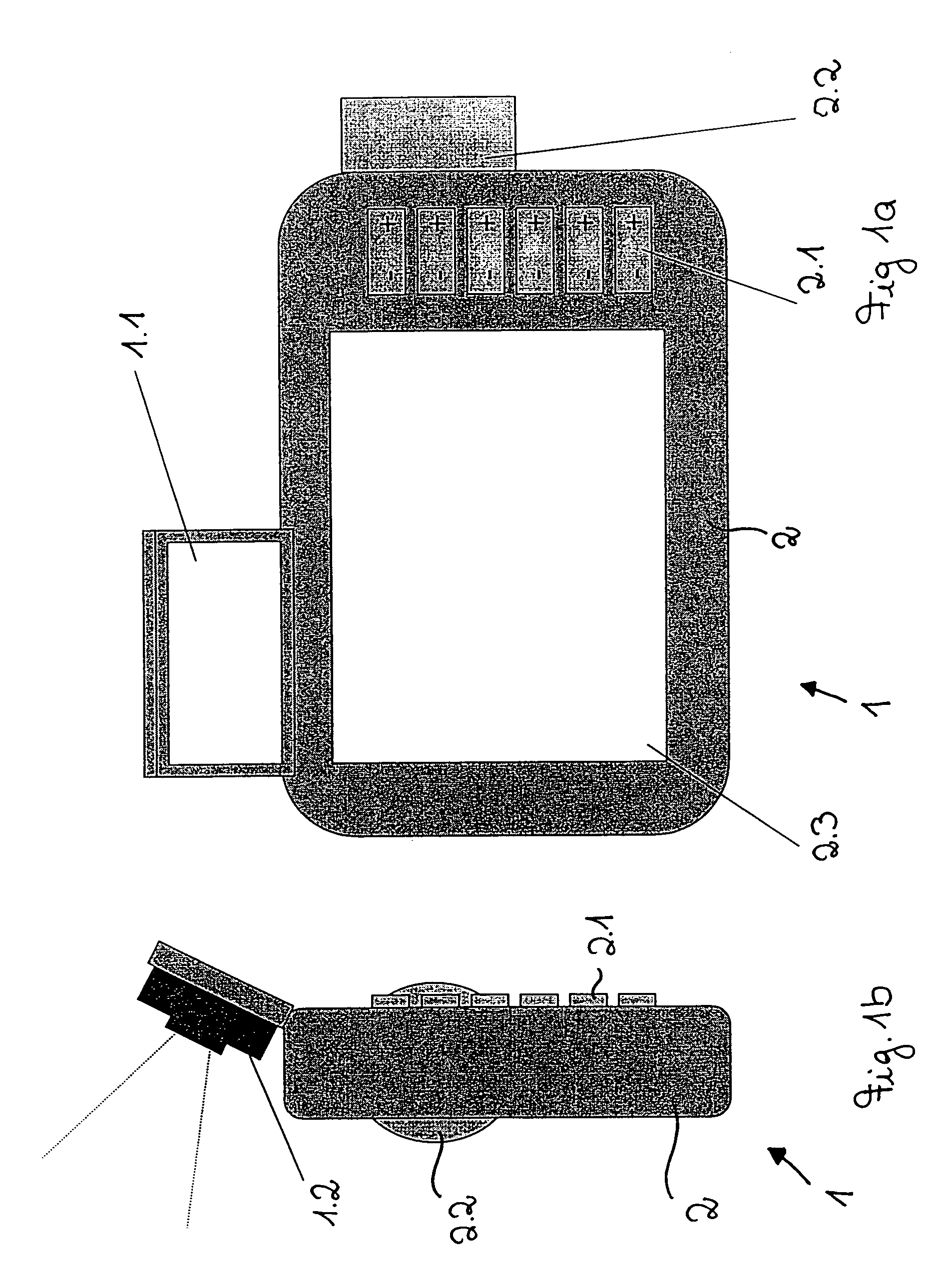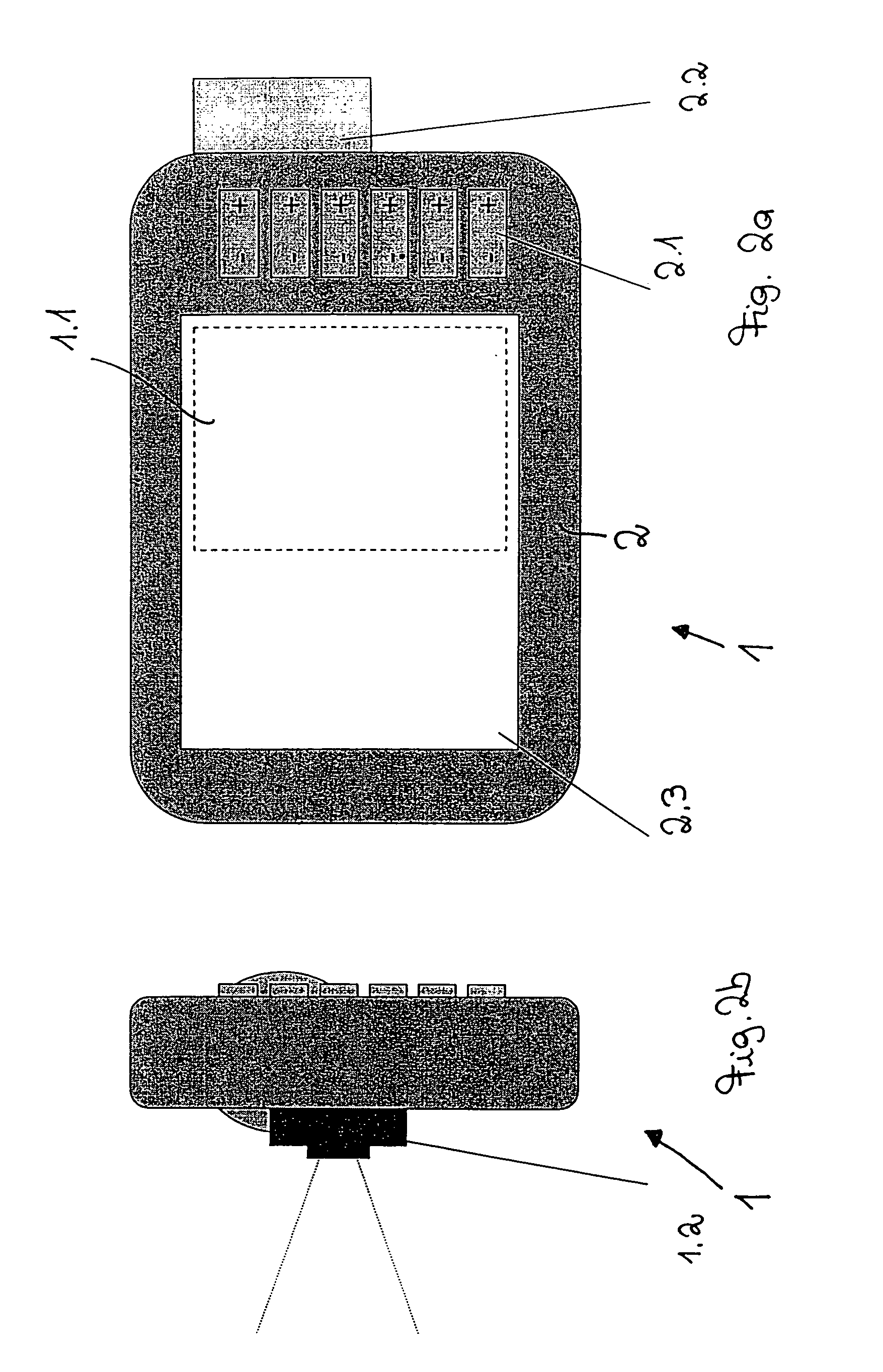Method and device for visualizing computer-generated informations
a computer generated information and information technology, applied in the direction of electrical programme control, program control, instruments, etc., can solve the problems of difficult to make this comprehensible to “robot movices”, experienced users come up against knowledge deficiencies, and serious damage or even injuries to persons, so as to save time and cost, the effect of reducing qualifications
- Summary
- Abstract
- Description
- Claims
- Application Information
AI Technical Summary
Benefits of technology
Problems solved by technology
Method used
Image
Examples
Embodiment Construction
[0063]Referring to the drawings in particular FIGS. 1a and 1b show a first embodiment of an inventive device 1 for fading computer-generated informations into an image of the real environment on a display.
[0064]The device 1 according to the invention has a manual programmer 2 for a robot with which the operating sequence of a robot can be comfortably programmed. The manual programmer 2 is provided for this purpose with control or operating elements in the form of six displacement keys 2.1 and a 6D mouse 2.2 by means of which the movements of the six axes of a robot can be controlled in the same way as through the keys 2.1. Such a manual programmer is known from EP 840 910 (corresponding to U.S. Pat. No. 6,134,102) or EP 840 909 (corresponding to U.S. Pat. No. 6,362,813), to which explicit reference is made in connection with the disclosure of such a manual programmer. The manual programmer 2 also has a screen 2.3 on which are displayed information and data of the control program, su...
PUM
 Login to View More
Login to View More Abstract
Description
Claims
Application Information
 Login to View More
Login to View More - R&D
- Intellectual Property
- Life Sciences
- Materials
- Tech Scout
- Unparalleled Data Quality
- Higher Quality Content
- 60% Fewer Hallucinations
Browse by: Latest US Patents, China's latest patents, Technical Efficacy Thesaurus, Application Domain, Technology Topic, Popular Technical Reports.
© 2025 PatSnap. All rights reserved.Legal|Privacy policy|Modern Slavery Act Transparency Statement|Sitemap|About US| Contact US: help@patsnap.com



